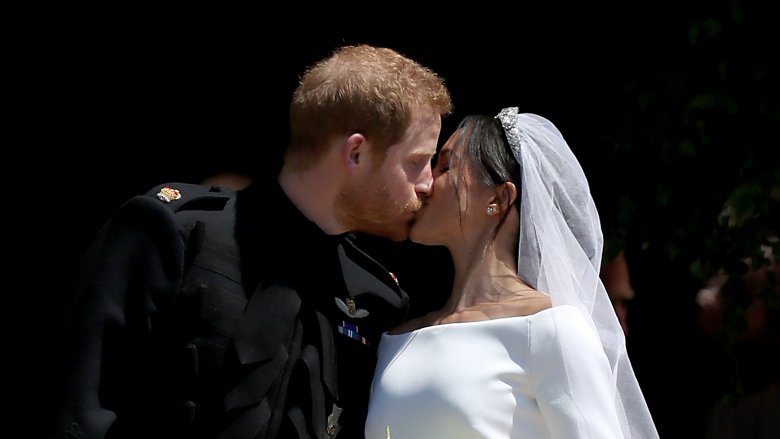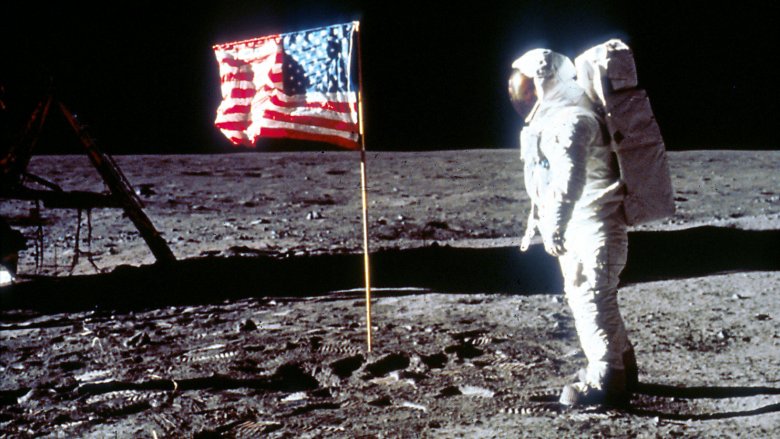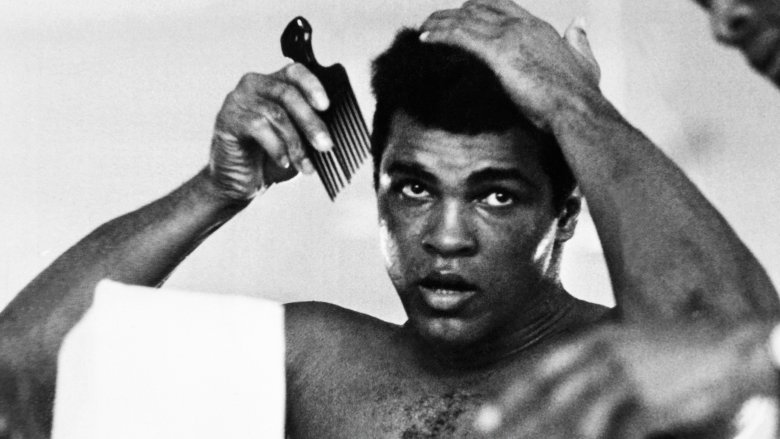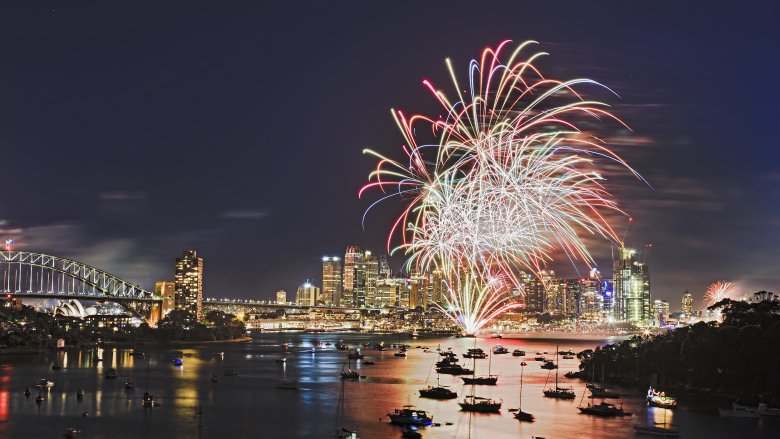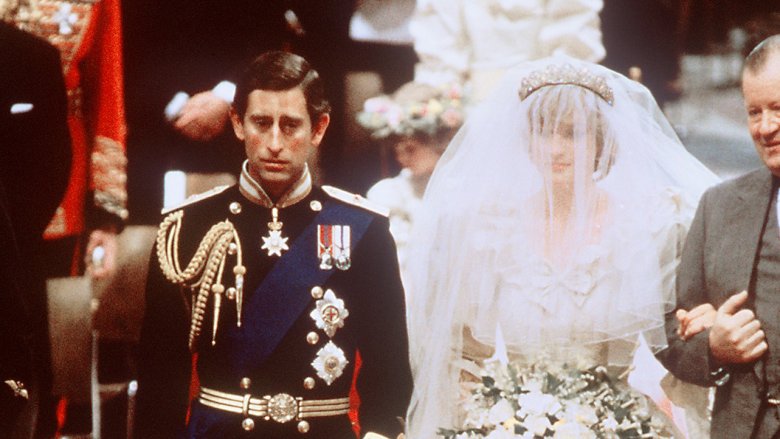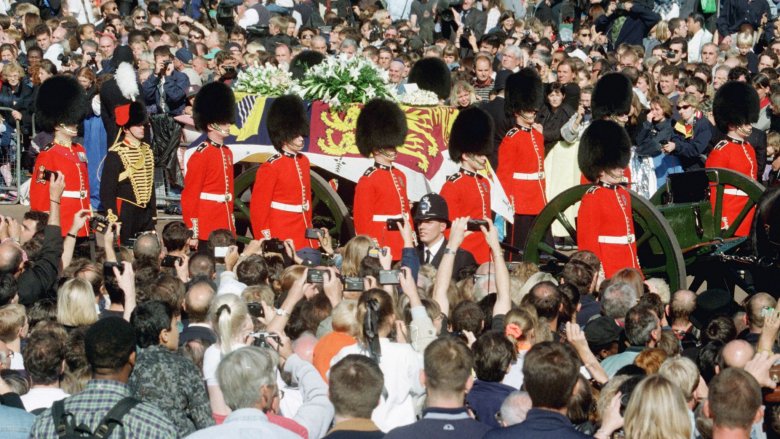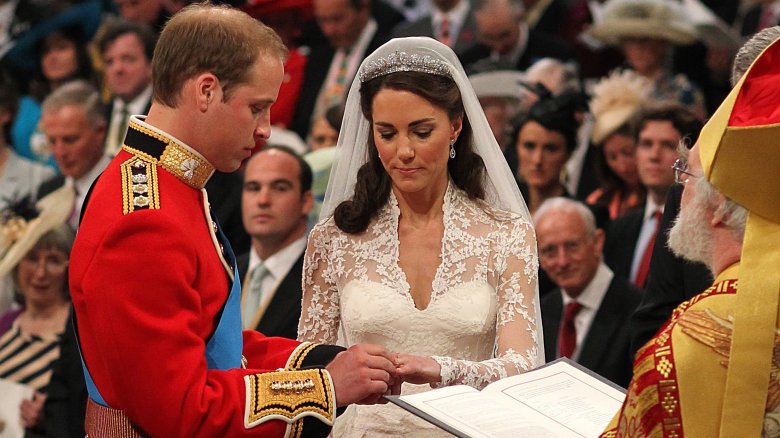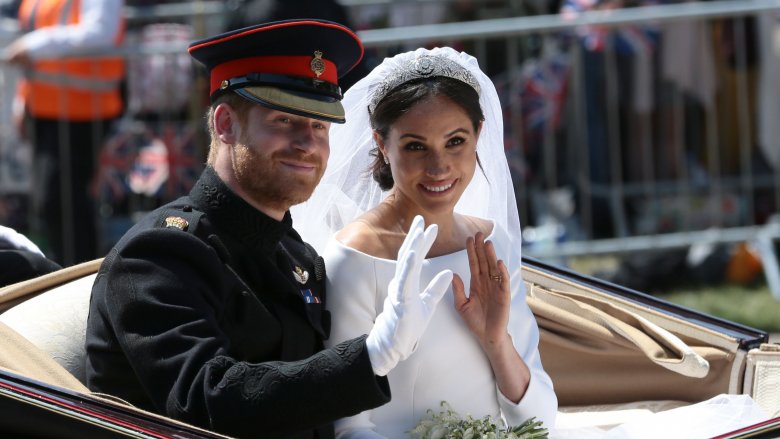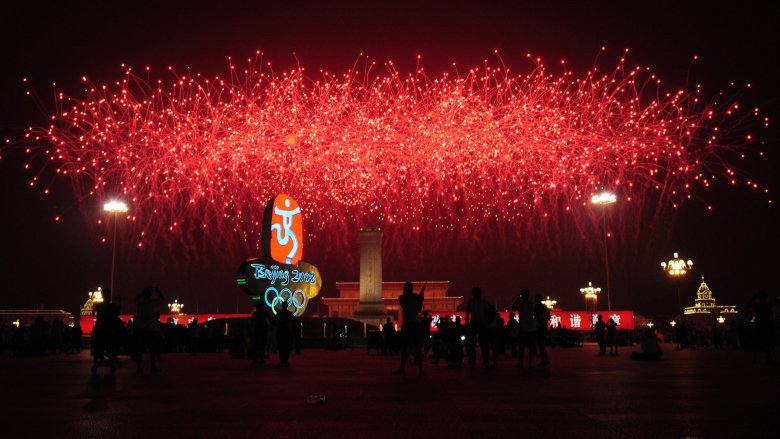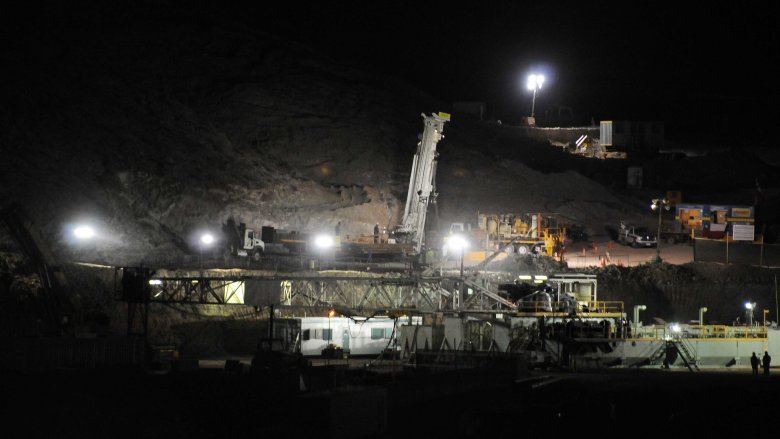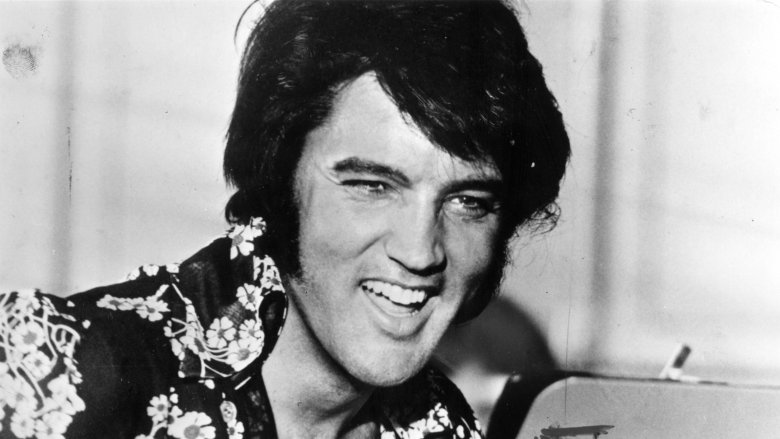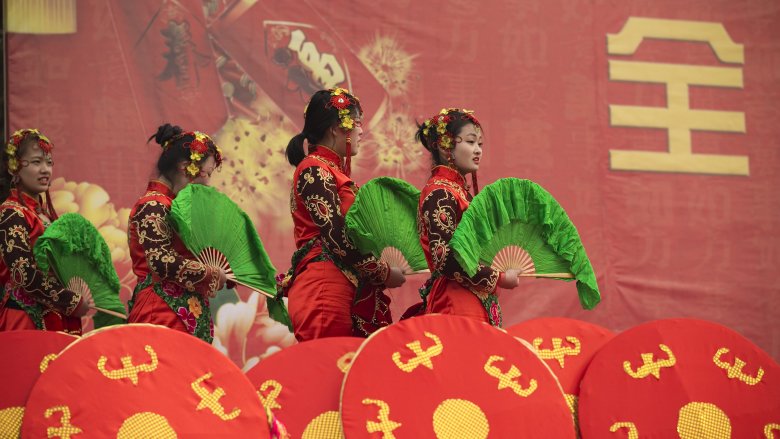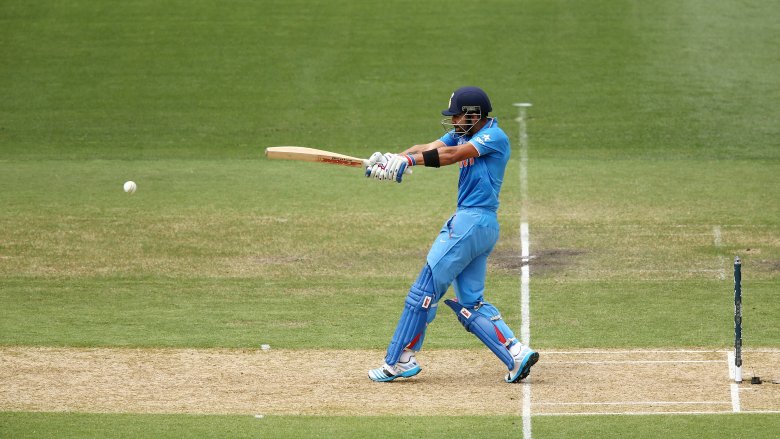The Most Watched Live TV Events In History
There can be little doubt that television has changed the world forever, not only in its ability to create history — great channels, legendary sitcoms, and record-breaking shows — but also in its ability to convey the world's most important events to millions or even billions of people around the world.
The most watched live TV events of all time constitute the precious few moments in which humanity has come closer together than ever before. When a billion people are plopped in front of their TV sets watching a man take a step onto another world, two fighters battering each other in the ring, or even the last journey of a beloved royal, they are doing so together — united not by their race or their nationality or their beliefs, but by their shared experience of history. That's the power of television, and that's the amazing thing about these live TV moments. They're like nothing else.
A historic step
You've probably heard of this one. The objective was simple: In 1969, a team of NASA scientists and astronauts would lead a mission into space, perform a "crewed lunar landing," and return to Earth. Among the many additional flight objectives was the one that really made history: the "deployment of a television camera to transmit signals to Earth." It all went quite well. The mission launched on July 16, piloted by Neil Armstrong, Michael Collins, and Edwin "Buzz" Aldrin. They made a few live TV transmissions along the way, mostly showing the world some of the maintenance they were doing during the mission, but we're really just here for the big one.
Armstrong was the first to step onto the Moon's surface. His voice was heard by about 530 million people around the world: "That's one small step for a man, one giant leap for mankind." Some scale for you: In 1961, only 47 million or so American households had televisions.
The not inconsiderable Rumble in the fairly large Jungle
The historic 1974 boxing match known as the Rumble in the Jungle is today remembered as the sport's greatest and most iconic event. George Foreman — then the undefeated world heavyweight champion — was pitted against former champion Muhammad Ali. It was to take place in the Democratic Republic of the Congo at 3 a.m. local time. Sixty thousand spectators would watch them fight, few of them believing that Ali, the underdog by a mile, could ever take it home.
An estimated audience of 1 billion people (about a quarter of the world's population) watched as Ali knocked out Foreman in the eighth round. Foreman, and everyone else, expected Ali to have to dodge and dance away for the majority of the fight, but Ali switched things up. His innovative rope-a-dope tactic (stationing himself against the ropes and making a home base there) confused and tired out Foreman, and Ali's blows landed far more heavily and effectively than they normally might. Ali regained his title and went down in sporting legend.
Sydney sets fire to 2011
Sydney's New Year's Eve celebrations are primarily a series of fireworks displays that take place near the city's Harbour Bridge, lighting up the midnight sky as well as surrounding landmarks like the Sydney Opera House and the Sydney harbour. The whole thing is soundtracked by contemporary and historical music, and each year is themed differently. Recent years have included "Making Your Mark," "City of Color," and "Wonder." Often, current events are commemorated or celebrated, such as 9/11 or Australia's legalization of same-sex marriage.
Every year, hundreds of millions of people tune in to watch the event on live TV, which can likely be put down to the fact that Sydney is one of the first major cities to celebrate New Year's Eve what with time zones and all. The peak came in the 2011/12 celebrations, when the city estimated that 1.1 billion people watched the show. It's by far the most watched New Year's event in the world.
The royal wedding
Royal weddings are something of a popular phenomenon right now — and we have a few to get through here — but it might come as surprise to find that by far the most viewed of the lot was the wedding of Charles and Diana in 1981. Six hundred thousand people lined the streets of London to watch as the newlyweds came and went from their ceremony, with a further 3,500 invited to be part of the congregation. The Brits were given a national holiday to celebrate while a group of 120 guests enjoyed a private wedding breakfast the morning after. Those aren't the impressive numbers, though.
No, that honor goes to the live TV audience, estimated at around 750 million people. At the time, it was the most popular television broadcast in U.K. history. The event still lingers in the public consciousness today, not least because of its eventual, tragic end.
Diana's last journey
On August 31, 1997, Diana was killed in a car crash near Paris after her drunken chauffeur sped into a tunnel to escape from the paparazzi. Her death echoed around the world. In Britain, a week of mourning was punctuated by a state funeral at Westminster Abbey in London, and over 1 million mourners stood along the funeral route as her coffin was taken from the Abbey to her family estate in Northamptonshire.
The whole event was filmed and broadcast on live TV. It was estimated that 2.5 billion people, just under half the world's population, watched the funeral. The hours leading up to her death and the days afterward remain some of the most heavily scrutinized in living memory. As of this writing, no live TV event has ever confirmed an audience quite as large as that of Diana's funeral, a testament to her celebrity status across the planet.
The other royal wedding
And now we come to more recent royal events. First up is the wedding of Kate Middleton to Prince William back in 2011. The second-in-line to the throne of the United Kingdom had met Middleton in 2001, and their wedding attracted a frenzy of media attention. A public holiday was declared in the U.K., and some of the more enthusiastic Britons around the country held parties and other events to commemorate the occasion. Nearly 2,000 guests watched the ceremony take place at Westminster Abbey, a guest list which included royals, celebrities, politicians and diplomats.
The total global audience for the wedding is unconfirmed, although around 72 million people watched it live on YouTube alone, while 24 million across the U.K. — over a third of the country's population — tuned in on their television sets. In the U.S., an estimated 23 million watched the nuptials. It stands to reason that the final global number is very high indeed.
Royal weddings forever
More recently, the wedding of Prince Harry to actress Meghan Markle attracted similar viewing figures. The decade's second major royal wedding took place in May 2018 at St. George's Chapel in Windsor Castle. The two had been together since 2016, and the wedding marked Markle as the second American and the first person of mixed heritage to ever marry into the British royal family.
According to CNN, 29 million people across the U.S. watched the wedding — a notable increase on the American viewing figures for William and Kate's wedding — but only managed around 18 million in the U.K. Certainly, plenty of people also watched the event on streaming devices and online, while more still will have tuned in around the world. As it stands, the total figures are a mystery, and commentators still can't quite be sure whether the event drew more or fewer numbers than William and Kate's wedding in 2011. But clearly, lots of humans love a good wedding.
An olympic Olympics
Being one of the oldest sporting events in human history, the Olympics tend to be fairly popular when they roll around — arguably none more so than the 2008 Beijing Olympics. Now, even the less impressive Olympic Games tend to nail the legendary opening ceremony, so it stands to reason that Beijing surpassed everyone else on that front, too.
At nearly five hours, the event was a tour de force of Chinese culture and art, in which 10,000 performers were featured, constituting the climax to a seven-year period of preparation for the games. In total, around 1 billion people (that's some 15 percent of the world's population) watched the opening ceremony. Around 842 million of those were Chinese citizens, meaning 69 percent of that country's population was watching. The foreign numbers are nearly as impressive: 5 million in the U.K., 34 million in the USA, and between 5 and 10 million from Australia, Italy, Germany, and France.
The century's most daring rescue
In August 2010, a cave collapsed at the San José copper–gold mine in northern Chile. Thirty-three men, all workers at the mine, were trapped almost 2,500 feet underground, 3 miles from the entrance to the mine. The rescue efforts were gargantuan. Three drilling teams were supported by the Chilean government and NASA, as well as a number of global corporations, in helping to dig the miners out. The miners themselves survived thanks to the eventual delivery of food from rescuers after it became clear that there were still survivors. The event had already become a global phenomenon, and speculation around the fates of the miners became rife as the days, and then weeks, stretched on.
Eventually, after 69 days underground, all 33 of the miners were rescued. An estimated 1 billion people watched as each miner was finally brought to the surface, cementing the rescue as one of the most impactful and remarkable news events of the 21st century.
Elvis' finest hour
You remember Elvis, right? He was the one with the big hair and the white suit. They impersonate him in Vegas. Oh, and he has sold a total of over 1 billion albums worldwide since his career began. Yeah, that one. The King.
Well, in 1973, Elvis became the first solo musician to broadcast a live concert — from the Honolulu International Center — across the entire world. Aloha from Hawaii Via Satellite aired in over 40 countries across Europe and Asia, and featured a mammoth setlist including such hits as "Johnny B. Goode," "Blue Suede Shoes," "Can't Help Falling in Love," and "Hound Dog." The gig also featured appearances from J.D. Sumner & the Stamps Quartet, the Sweet Inspirations, and the TCB Band. All in all, it's estimated that over 1 billion people worldwide watched the event, making it easily one of the most watched music events in history.
China's takes on New Year's
Coming up a close second to Sydney's New Year's Eve celebrations is the Chinese New Year's Gala. It's a yearly special produced by China Central Television and featuring a variety of entertainment (music, dance, comedy, and dramatic performances) to the Chinese public on the eve of the country's new year. It's presented by a series of television personalities and nowadays has something of a political bent as well as a cultural one.
The gala is also prone to its fair share of controversy, such as in 2018 when a comedy segment portrayed offensive depictions of African people that, frankly, have to be seen to be believed — but don't really merit seeing in the first place. (There was blackface, monkey suits, exaggerated butts, etc.) Nonetheless, the viewership figures for the gala are astronomical and regularly reach the high hundreds of millions. In 2018, the estimated number of viewers (mostly within China, where watching it is something of a tradition) hit 800 million.
A showdown down under
It's rare for a sporting event to reach the same number of live TV viewers as major news events and other televised cultural landmarks, but it happened in 2015 — just as it did in 1974 with Foreman v. Ali — during a World Cup cricket match between long-time rivals India and Pakistan. 2015 was the 11th Cricket World Cup, hosted jointly between Australia and New Zealand. India was defending its title as world champions since winning in 2011.
The India-Pakistan fixture was a one-day group match that took place in Adelaide, Australia. In the end, over 1 billion people watched the game, with most of the viewers living in — as you'd expect — India or Pakistan. If you're wondering: India won by 76 runs, which counts as a fairly comfortable victory in cricket. They wouldn't go on to succeed in the wider tournament, however, as Australia snagged the title out from under them. Easy come, easy go. Everyone gets to try again in 2019!
